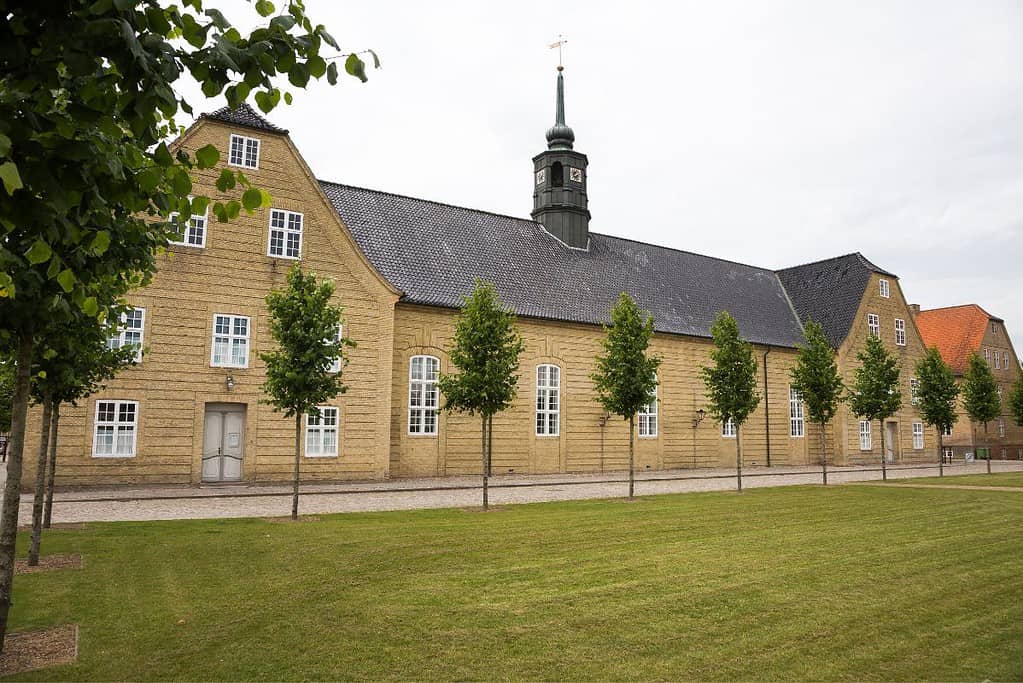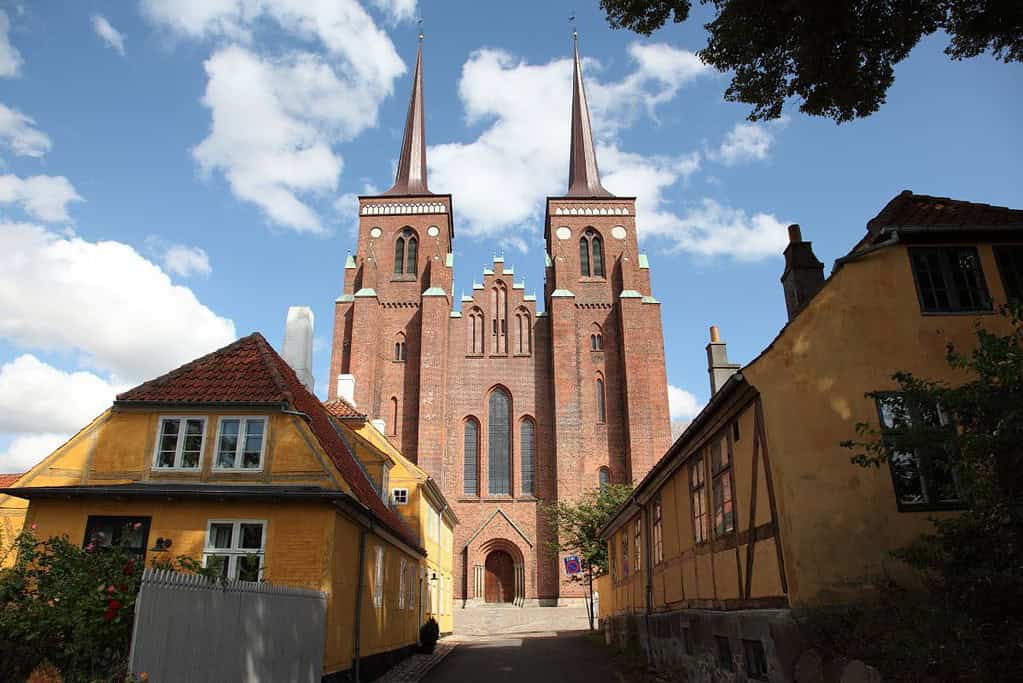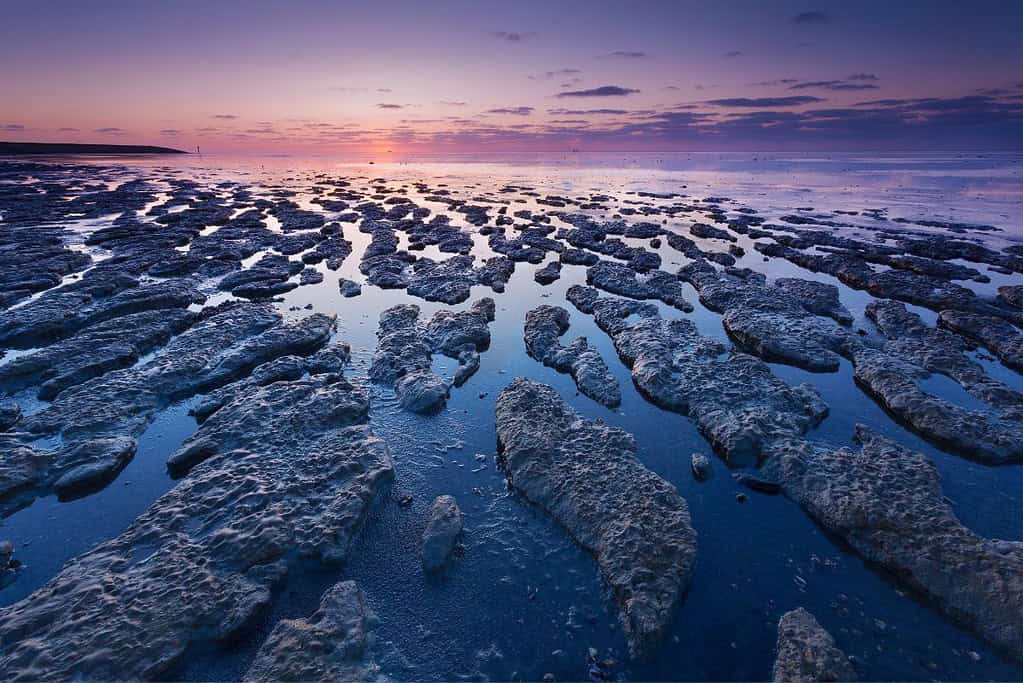Table of Contents
The UNESCO Sites in Denmark have resulted from the recognition of 10 cultural and natural landmarks as UNESCO World Heritage Sites in Denmark and 5 locations on the Denmark UNESCO tentative list. These tourist sites in Denmark are acknowledged for their unique and valuable cultural, natural, artistic, and historic significance and are preserved for future generations to enjoy.
In addition to these 10 sites in the Denmark UNESCO list, there are many other places to travel to Denmark that are being considered for UNESCO recognition. These sites, listed on the tentative list, showcase the rich cultural heritage of the country and are waiting for approval to join the prestigious and famous World Heritage Sites list.
To help visitors discover these remarkable Denmark tourist attractions, we have put together an interactive map of the UNESCO sites in Denmark.
Denmark UNESCO Map
Click markers to show information and photo.
World Heritage Sites in Denmark
UNESCO World Heritage Sites in Denmark
There are 10 UNESCO World Heritage Sites in Denmark. All of these three sites are listed under the Cultural category.
- Aasivissuit – Nipisat. Inuit Hunting Ground between Ice and Sea
- Christiansfeld, a Moravian Church Settlement
- Jelling Mounds, Runic Stones, and Church
- Kronborg Castle
- Kujataa Greenland: Norse and Inuit Farming at the Edge of the Ice Cap
- Roskilde Cathedral
- The par force hunting landscape in North Zealand
- Ilulissat Icefjord
- Stevns Klint
- Wadden Sea
UNESCO World Heritage Sites in Denmark are protected locations for their cultural and natural importance.
Aasivissuit – Nipisat. Inuit Hunting Ground between Ice and Sea
Aasivissuit-Nipisat, also known as “Inuit Hunting Ground between Ice and Sea,” is a UNESCO World Heritage Site in Greenland. This unique site is of great cultural and historical significance as it represents the Inuit people’s traditional hunting practices and way of life. Situated between the vast ice sheet and the open sea, Aasivissuit-Nipisat showcases the harmonious relationship between humans and nature. The site includes archaeological remains, ancient trails, and hunting structures reflecting the deep connection between the Inuit and their environment. It serves as a testament to the sustainable practices and rich cultural heritage of the Inuit communities in Greenland.
Christiansfeld, a Moravian Church Settlement

Christiansfeld, a Moravian Church Settlement, is Denmark’s UNESCO World Heritage Site. This unique settlement was founded in 1773 by a group of Moravian Christians who sought to create a self-sustaining community based on their religious principles. The town features a remarkable layout with its grid pattern of streets and uniform architecture, showcasing characteristic red-brick buildings and beautiful gardens. Christiansfeld is particularly renowned for its well-preserved church and cemetery, reflecting the Moravian community’s vital cultural and spiritual significance. Today, it is a testament to the Moravians’ commitment to faith, craftsmanship, and community living.
Jelling Mounds, Runic Stones, and Church

Jelling Mounds, Runic Stones, and Church are UNESCO World Heritage Sites in Denmark. They hold great historical and cultural significance. The site consists of two large burial mounds dating back to the 10th century, believed to be the final resting place of Viking kings. The famous Jelling Stones, intricately carved with ancient runic inscriptions, stand nearby and provide valuable insights into Viking culture and history. Adjacent to these stones is the Jelling Church, a beautiful medieval church built in the 12th century. Together, these elements form a remarkable ensemble that showcases the rich heritage and artistry of the Viking Age in Denmark.
Kronborg Castle

Kronborg Castle, a UNESCO World Heritage Site in Denmark, is an iconic Renaissance castle with great historical and cultural significance. Situated on the northeastern coast of the island of Zealand, it played a vital role in controlling the entrance to the Baltic Sea and was a symbol of Danish power during the 16th and 17th centuries. The castle’s imposing architecture, with its elegant spires and strong fortifications, showcases a blend of Renaissance and medieval styles. Kronborg Castle is also famously known as the setting for Shakespeare’s play “Hamlet,” adding to its allure and international recognition. Today, visitors can explore its grand halls, intricate tapestries, and captivating underground passages, immersing themselves in centuries of Danish history and legends.
Kujataa Greenland: Norse and Inuit Farming at the Edge of the Ice Cap

Kujataa Greenland, a UNESCO World Heritage Site, showcases the remarkable history of Norse and Inuit farming at the edge of the ice cap. Located in southern Greenland, Kujataa is an exceptional testament to the interaction between Norse settlers from medieval Europe and the indigenous Inuit people. The site encompasses a diverse range of archaeological remains, including well-preserved ruins of Norse farms and churches and evidence of Inuit hunting and fishing activities. This unique cultural landscape provides valuable insights into the challenges and adaptations of human civilizations in a harsh Arctic environment, making Kujataa Greenland a captivating destination for those interested in the intertwining histories of two distinct cultures.
Roskilde Cathedral

Roskilde Cathedral, located in Roskilde, Denmark, is a remarkable UNESCO World Heritage Site. This magnificent Gothic-style cathedral is a testament to Denmark’s rich history and architectural prowess. Dating back to the 12th century, it was the royal burial site for Danish monarchs for centuries. The cathedral’s towering spires, and intricate stone carvings showcase the skill and artistry of the craftsmen who built it. Visitors can explore beautifully adorned chapels and experience the grandeur of royal tombs. Roskilde Cathedral is a cherished symbol of Danish heritage and a must-visit destination for history and architecture enthusiasts alike.
The par force hunting landscape in North Zealand

The Par Force Hunting Landscape in North Zealand is Denmark’s UNESCO World Heritage Site. This unique landscape is a testament to the historic par force hunting tradition during the 17th and 18th centuries. The site encompasses extensive forests, open spaces, and an intricate network of hunting roads, including the King’s Road, which the Danish monarchs used for hunting. The landscape reflects the meticulous planning and design of the hunting grounds, integrating both natural and man-made elements. It is an exceptional example of how human intervention can harmoniously blend with nature, creating a remarkable cultural and natural heritage.
Ilulissat Icefjord

Ilulissat Icefjord, located in Greenland, is a breathtaking UNESCO World Heritage Site that showcases the remarkable beauty and significance of Arctic landscapes. This magnificent fjord stretches over 40 kilometers and is filled with towering icebergs, resulting from the dramatic calving of the Sermeq Kujalleq glacier. The icebergs that drift through the fjord create a mesmerizing spectacle, displaying various shapes, sizes, and hues. This awe-inspiring natural phenomenon provides a glimpse into the ongoing process of glacial erosion and the impacts of climate change. Ilulissat Icefjord is a testament to the power and fragility of nature, offering visitors an unforgettable experience and a deeper understanding of our planet’s delicate ecosystems.
Stevns Klint

Stevns Klint is a UNESCO World Heritage Site located in Denmark. It is a striking coastal cliff formation that spans approximately 15 kilometers along the eastern coast of the island of Zealand. This dramatic geological site showcases layers of fossil-rich chalk cliffs, revealing a record of Earth’s history spanning millions of years. Stevns Klint is not only significant for its geological value but also for its archaeological and historical importance. The site contains evidence of a meteorite impact around 65 million years ago, leading to the dinosaurs’ extinction. It is a captivating destination for nature lovers, scientists, and history enthusiasts, offering a unique glimpse into the Earth’s ancient past.
Wadden Sea

The Wadden Sea, a UNESCO World Heritage Site, is a unique and remarkable natural area along the coasts of Denmark, Germany, and the Netherlands. It is renowned for its vast tidal flats, dynamic dunes, and diverse ecosystems supporting various plant and animal species. The Wadden Sea is a crucial stopover and breeding ground for millions of migratory birds, making it a vital link in the global bird migration routes. Its pristine landscapes, rich biodiversity, and intricate ecological processes make the Wadden Sea an extraordinary and globally significant site deserving of UNESCO recognition.
Denmark UNESCO tentative list
- Amalienborg and its district
- Moler landscapes of the Liim Fiord
- Viking Age Ring Fortresses
- The Maritime Heritage of Dragør Old Town and Harbour – A ‘skipper-town’ from the era of the great tall ships in the 18th and 19th centuries
- Møns Klint
Tours in Denmark
Our choices of tours in Denmark are divided into thematic features such as Copenhagen, Skagen, and Roskilde Experience.
